
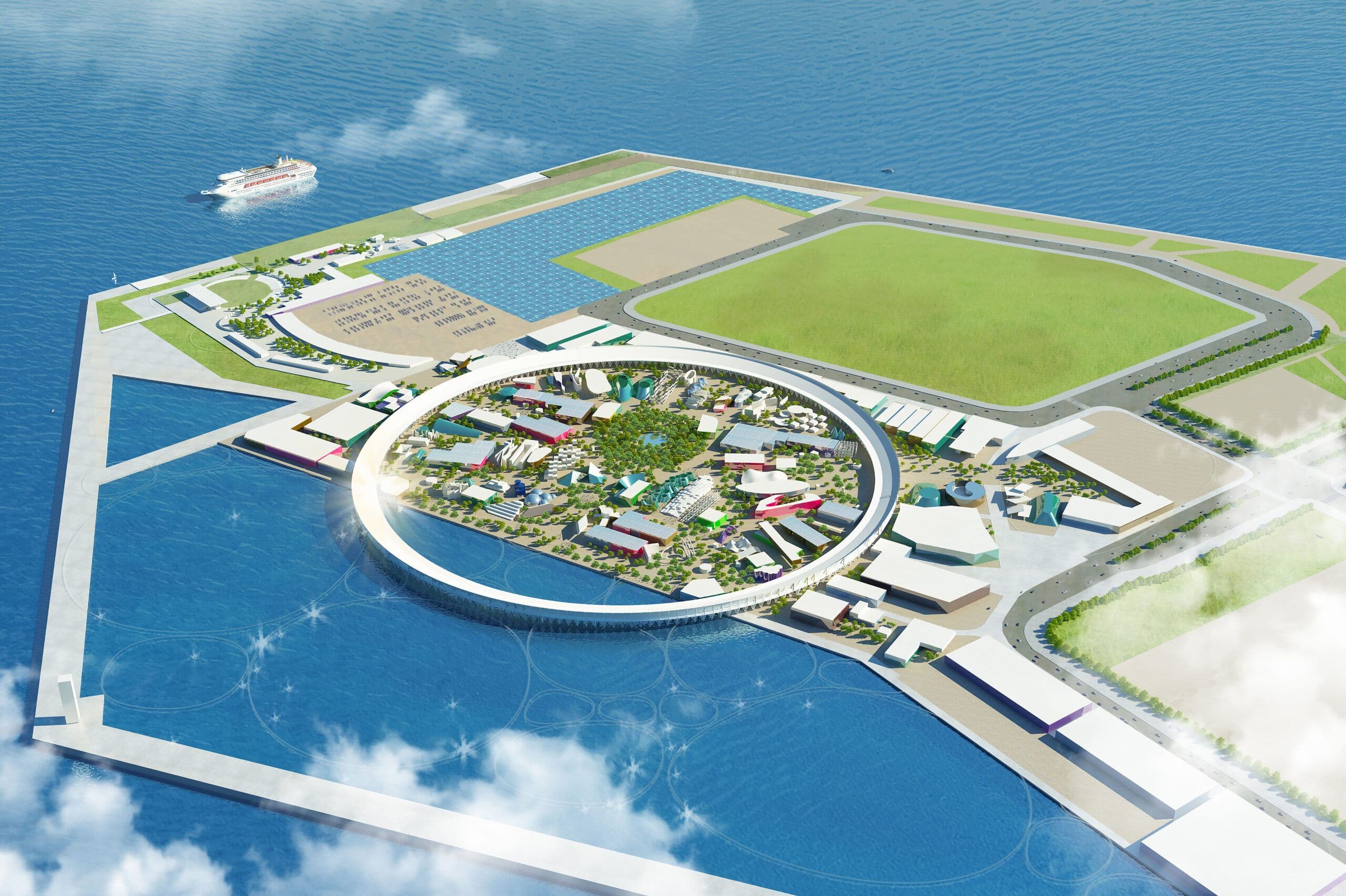
Don't miss your chance to be a part of history in the making at the World Expo in Osaka, Japan.
The World Expo 2025 is where the future meets reality. For more than a century, the World Expo has defined how we view the future. There have been many famous Expo throughout history, like Paris, Chicago, London, and most recently Dubai Expo 2020, and this time it takes place in Japan! Imagine being present at the unveiling of the Eiffel Tower at the Paris Exposition Universelle or watching the world's first TV broadcast at the New York World's Fair. This year is your chance to witness history as Osaka welcomes the world to Japan. Together with the Japan Rail Pass, we make the Expo accessible and unforgettable.
The Osaka World Expo 2025 is a global event like no other Daniel-san, JRPass.comOpening on April 13th, 2025 - more than 36 million visitors are expected to attend the six-month-long event as visionaries from over 100 countries descend on Osaka to reveal their visions of the future, from the latest, mind-blowing discoveries in AI, robotics, and health technology, to sustainable energy, and quantum computing. It doesn't get more 'once in a lifetime' than this - and you can be part of it all.
Beyond the wonders of the Expo itself, you'll find the vibrant city of Osaka to discover, known as Japan's kitchen for its famed cuisine and neon nightlife, and that's just the beginning. There’s the Kansai region, where you’ll find other wonderful places like Kyoto, Nara, Kobe and the sacred mountain of Koya-san. With the famous Japan Rail Pass you can explore the Expo and the rest of the entire country without limit, whether it is a visit to Nagasaki, Tokyo or even Hokkaido. For those that do prefer more local, there are plenty of regional passes that help you discover the Kansai Area in a budget-friendly way.
If you needed a sign, this is it! Start planning your trip to the Osaka Expo today.


Global exhibitions, also known as expositions or world's fairs, have been held regularly since the mid-19th century, showcasing the latest technological, cultural and scientific developments of their time. Countries from all over the world share their vision for the future and at the same time compete for the top spot of making the most impressive display.
World exhibitions have always been products of the environments in which they were created. In the Victorian Era, colonial attitudes permeated the exhibits. During the Cold War, on the other hand, the 'space race' dominated US and Soviet contributions. Global exhibitions have hosted some huge moments in world history, from the unveiling of the Palace of Fine arts in San Francisco, to the first live TV broadcast in NYC, to the unveiling of the now iconic Eiffel tower.
Where in the future it was more about the competition of nations, the whole World Expo today is an event that brings together people and innovations from around the world in an effort to address issues facing humankind on a global scale. It is a place where new technologies and products are born, triggering greater convenience in our daily lives.
The theme: “Designing Future Society for Our Lives” makes individuals think how they want to live and how they can maximise their potential. It is also intended to drive co-creation by the international community in designing a sustainable society that supports individuals' ideas of how they want to live. In other words, the Expo will ask a straightforward question to everyone, “What is the happy way of life?” for the first time. The Expo will address new social challenges, including expanding economic gaps and heightened conflicts, that are emerging while science technologies are evolving, including AI and biotechnologies. Ultimately, the expo explores how present changes will impact humankind through topics such as life extension and living our lives entwined between the digital and real world.

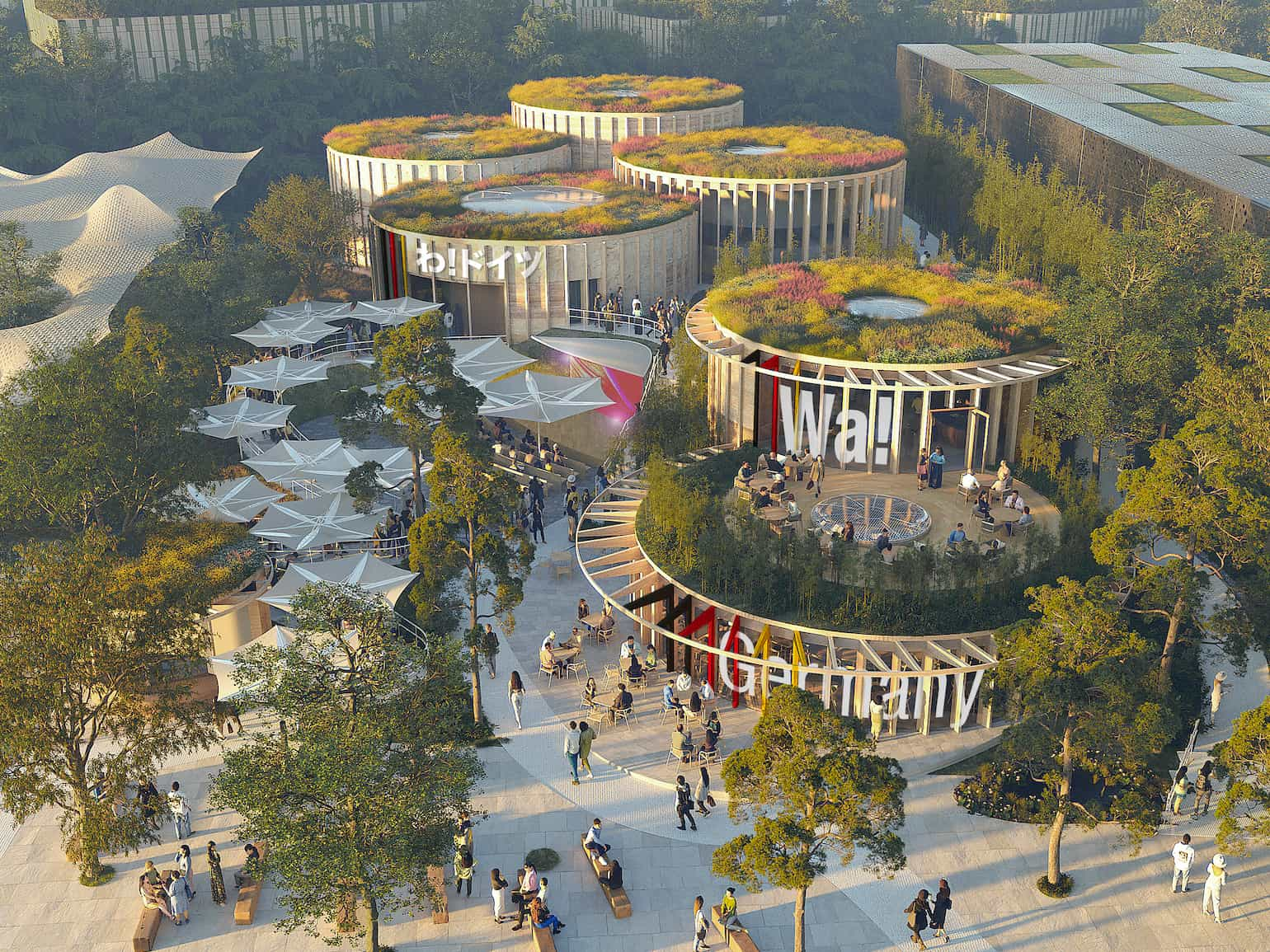

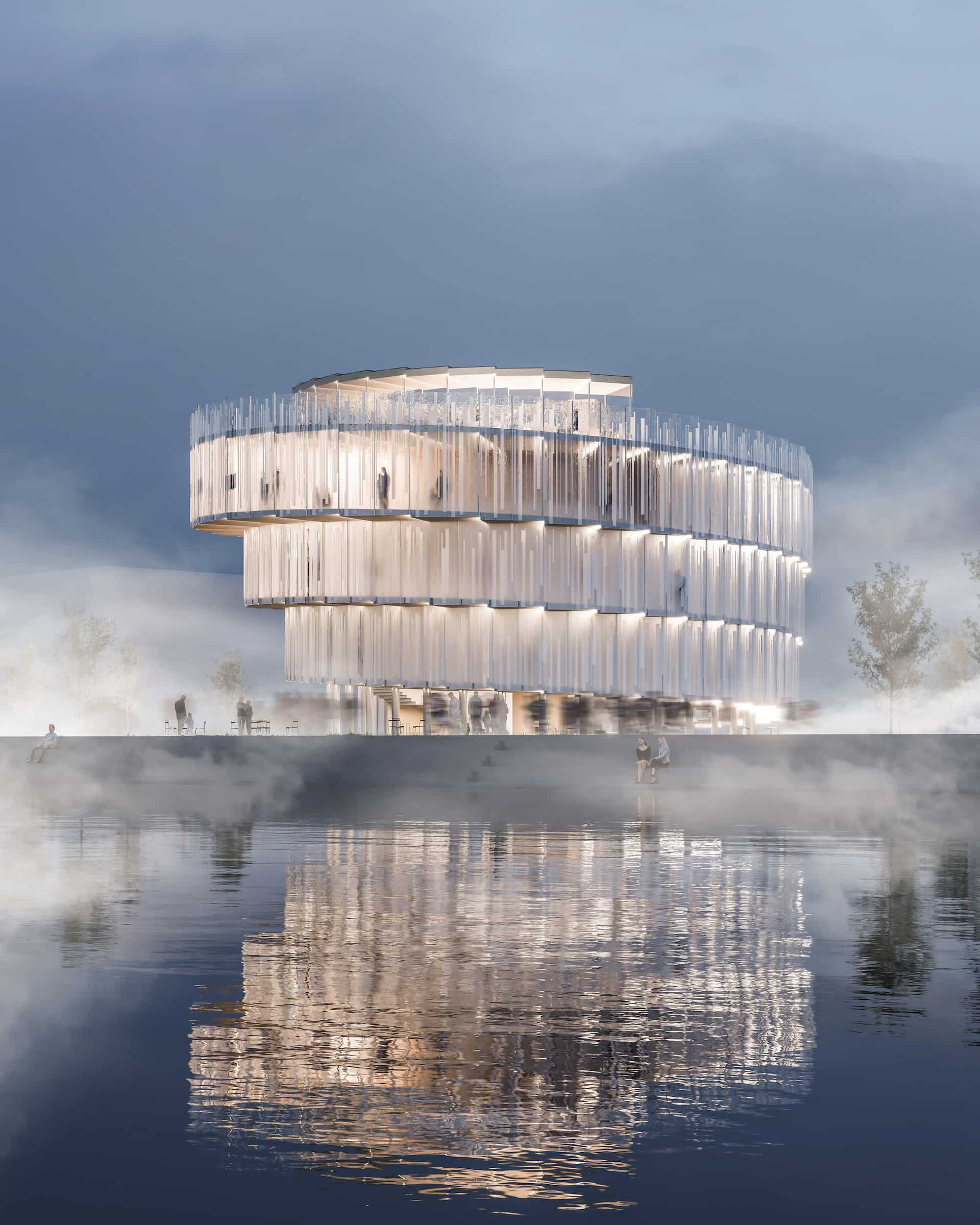
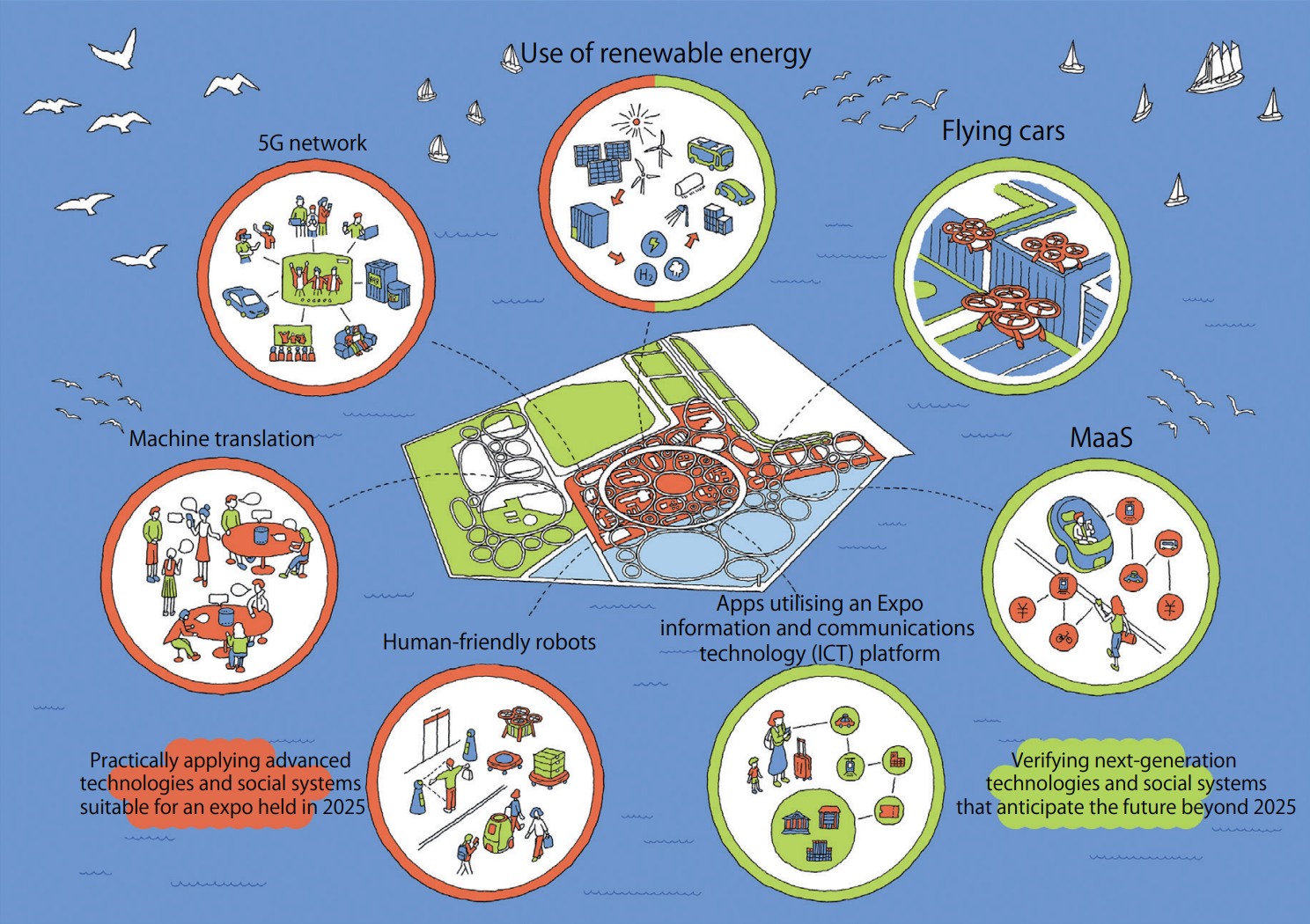
One of the most widely acclaimed world expos in history, France's Exposition Universelle took place in Paris in 1889. The biggest attraction unveiled at the 1889 expo was undoubtedly the Eiffel Tower, then the tallest building on the planet. The architectural triumph served as the main archway into the exposition site. Taking place on the anniversary of the French Revolution, Exposition Universelle 1889 aimed to showcase the achievements of France and its colonies. Its exhibits included displays of cutting-edge technologies, cherished artworks and grandiose architectural constructions. The 1889 Exposition Universelle attracted some 32 million visitors and was ultimately one of the most profitable global expositions in history.
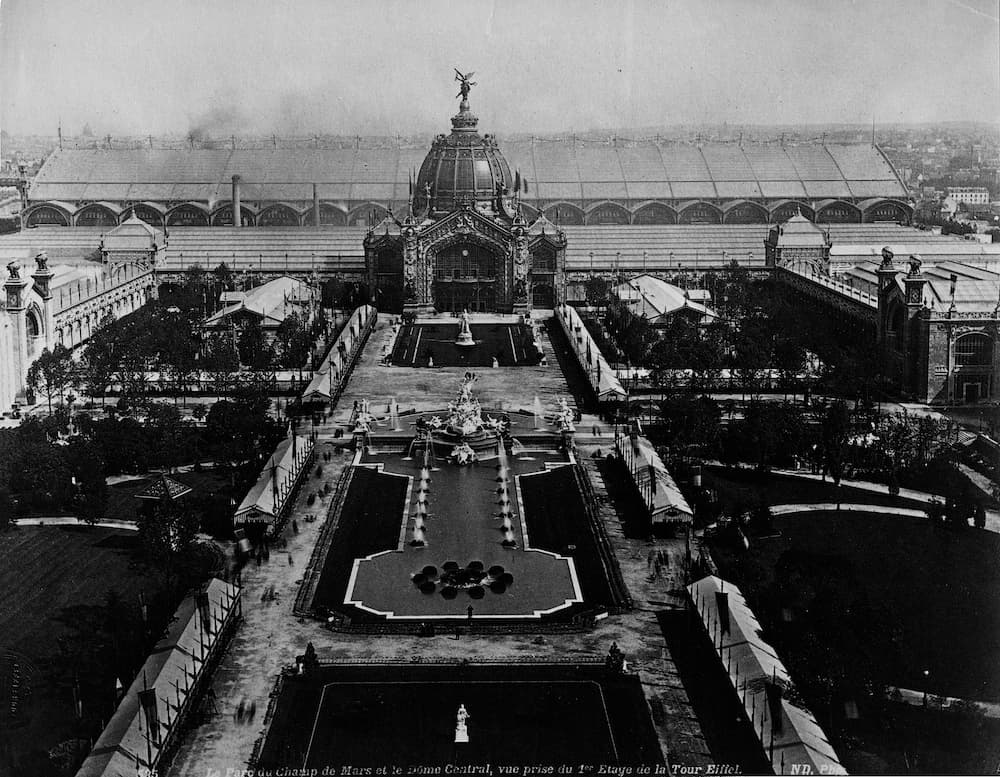

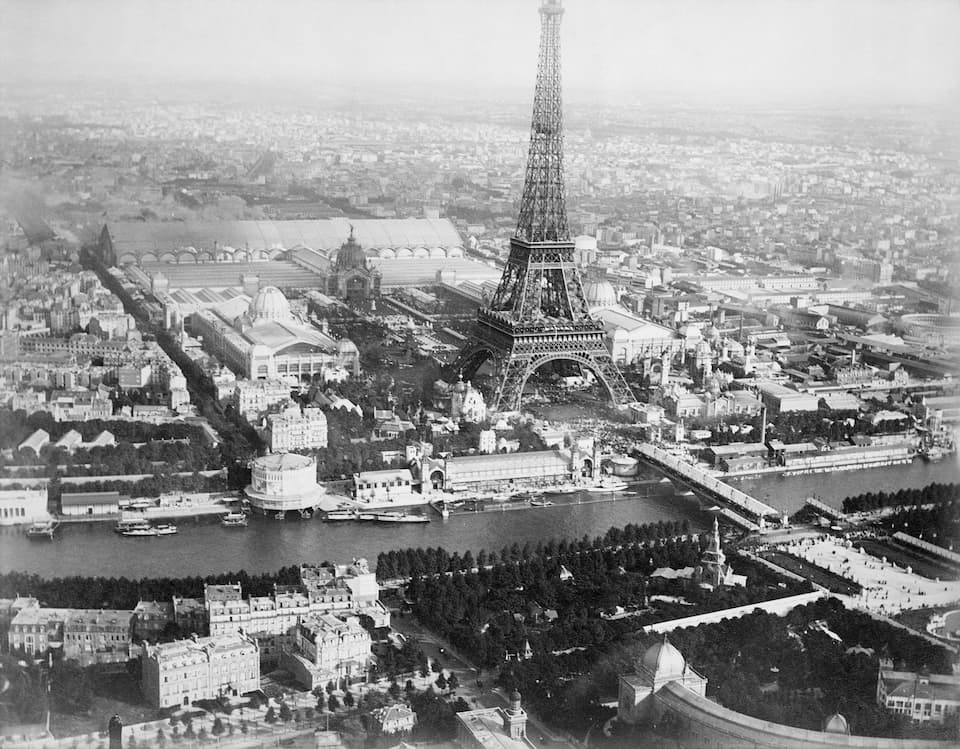
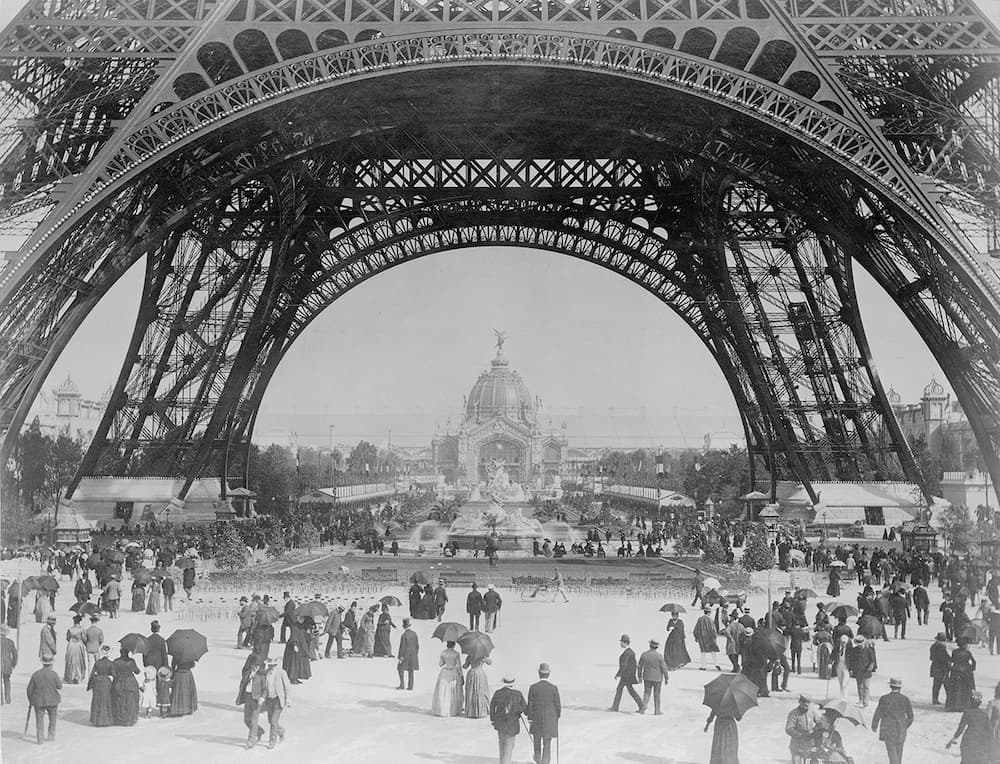
Following in the tradition of many European nations, the United States had begun hosting regular world expos by the late 19th century. One of America's most important world's fairs was the World's Columbian Exhibition in Chicago, which was specifically organized to surpass the remarkable success of France's 1889 Exposition Universelle. While none of its structures quite surpassed the Eiffel Tower, the Columbian exhibition did feature George Ferris' 'Big Wheel', the world's first Ferris wheel. It also made rides, venues and events a key aspect of the fair, constructing a vast entertainment zone for guests to enjoy. Many European expos would later follow in this tradition. The Columbian Exposition also featured displays of 'native villages'. World expos have always been products of their time and the Columbian Exposition was no exception. Informed by ideas of Western superiority, so-called 'primitive peoples' featured in an amusement park of 'live displays' and 'human exhibits'. Native Americans and South Pacific islanders, for example, were displayed to demonstrate the success of 'civilising' colonial missions or the superiority of Western society.
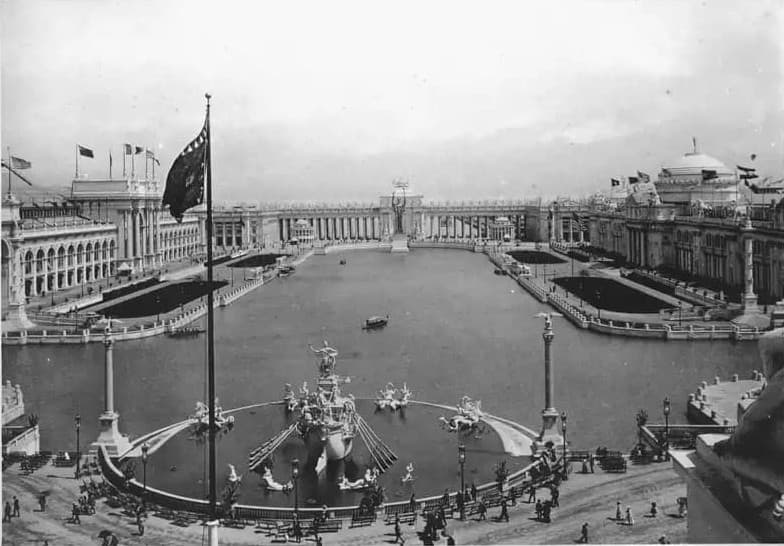
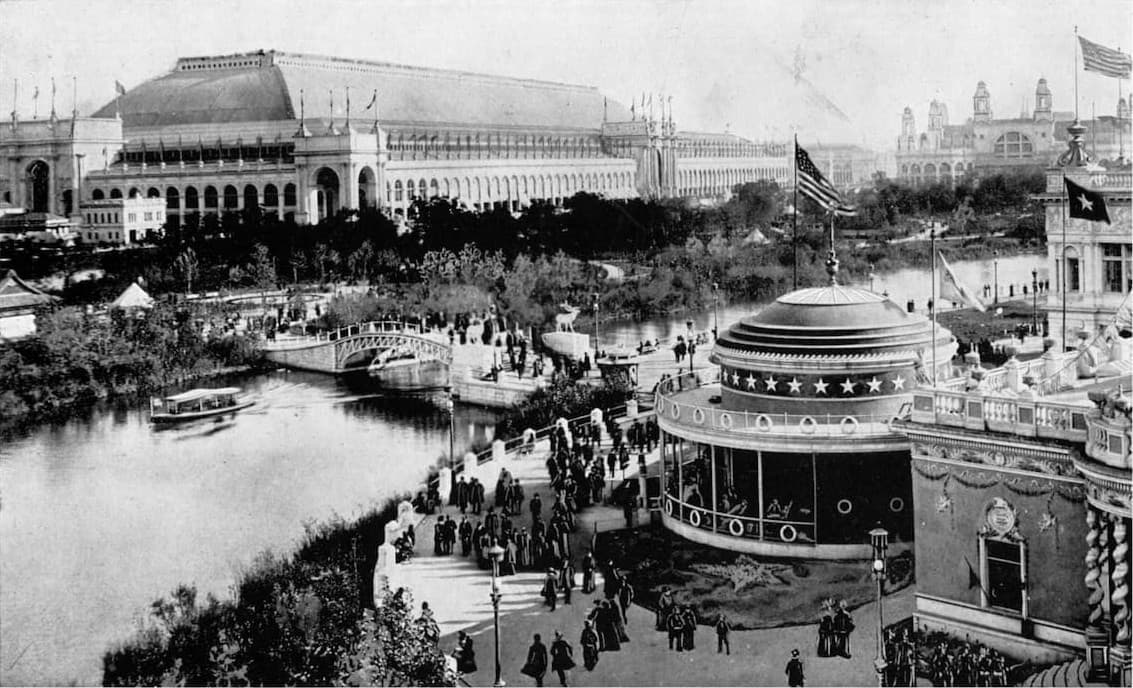

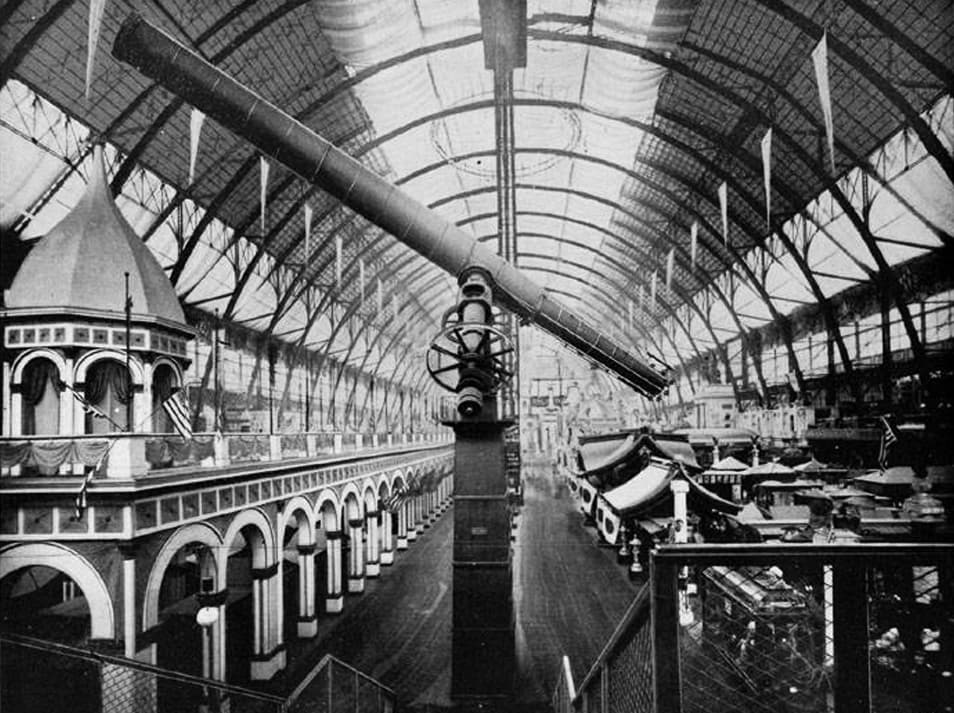
World War One marked a turning point for world fairs. After the war, global expos declined in significance and cultural appeal; with the advent of radio and improvements to rail travel, fairs didn't offer the same appeal as they once had. Nonetheless, they continued to showcase key technological and cultural developments. An important example of this took place at the New York World's Fair of 1939. There, the first live TV broadcast in history was made. After the 1933 Chicago World Expo, every world's fair had a specific theme. In 1930s America, those themes typically promoted positivity in the face of the Great Depression. For the 1939 New York Fair, that theme was titled The World of Tomorrow, though the project's optimism was somewhat blighted by the outbreak of World War Two.
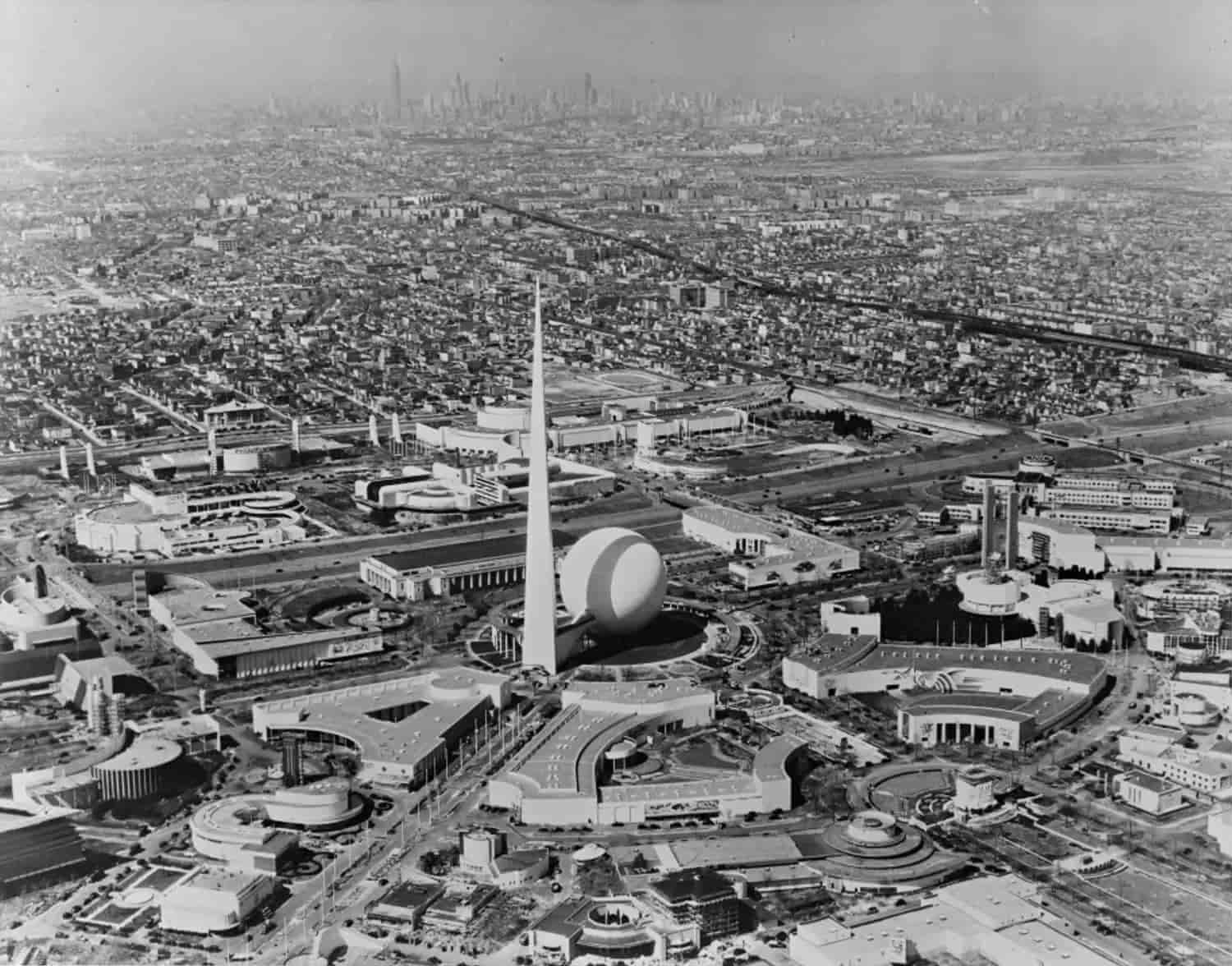
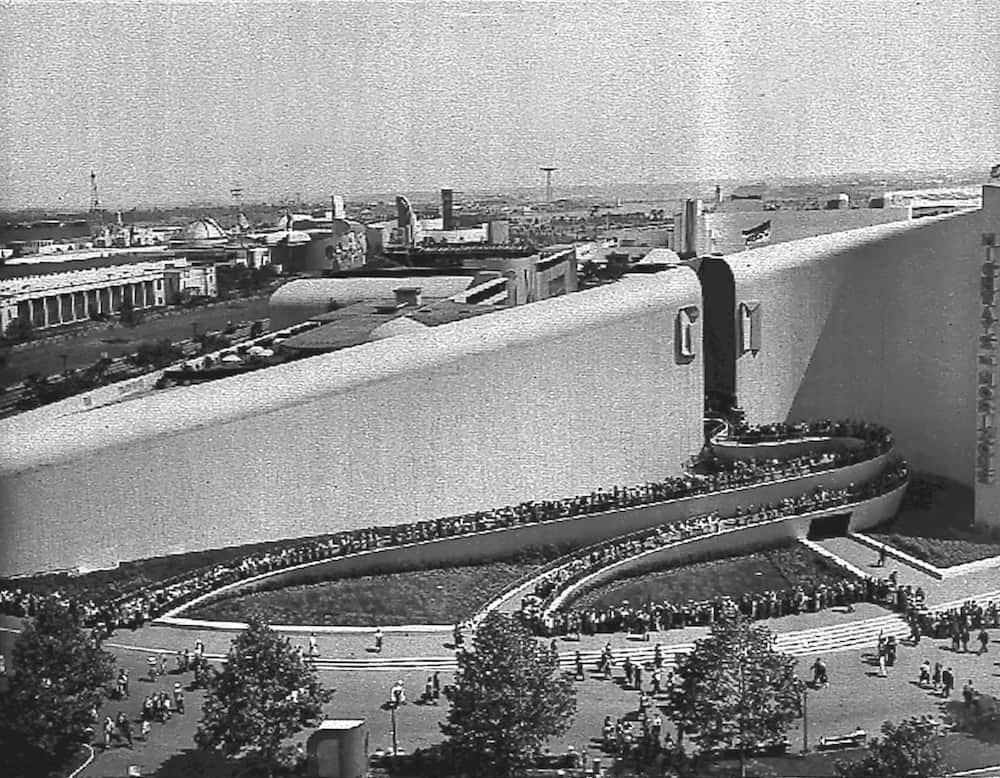

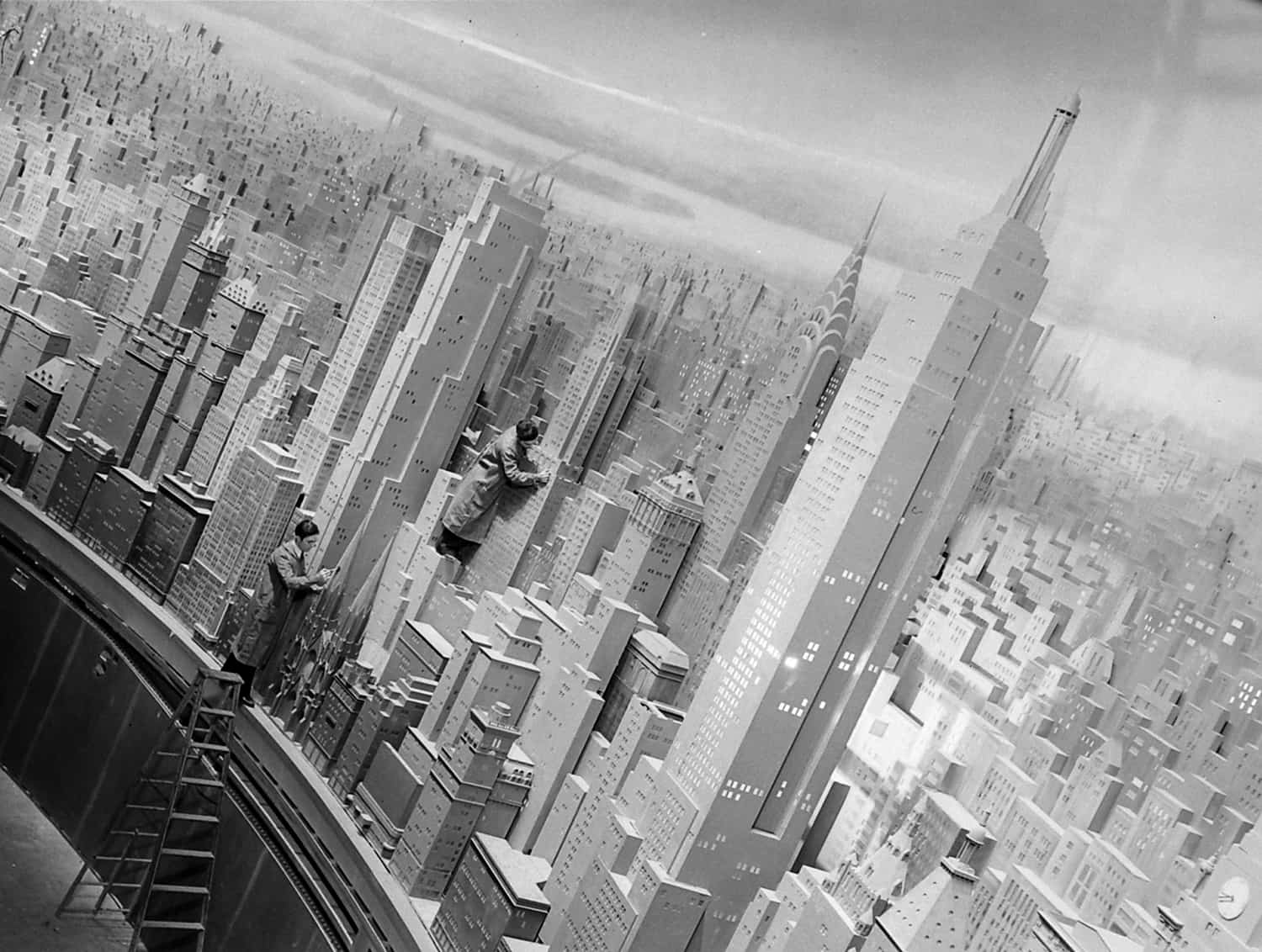
The Japan World Exposition Osaka 1970, the first-ever international exposition in Asia, was held against a background of Japan's recovery from severe damage from WWII and its subsequent high economic growth. The Expo had a strong impact on visitors by exhibiting the most advanced technologies of the time and showing the prosperous future that technology would bring. Japan has since hosted several international expositions, including the International Garden and Greenery Exposition, Osaka, Japan, 1990, held under the theme of the “Harmonious Coexistence of Nature and Mankind,” and the 2005 World Exposition, Aichi, Japan, with the theme “Nature's Wisdom.” All these international expositions tackled the challenges of the respective ages to find solutions through global collaboration.
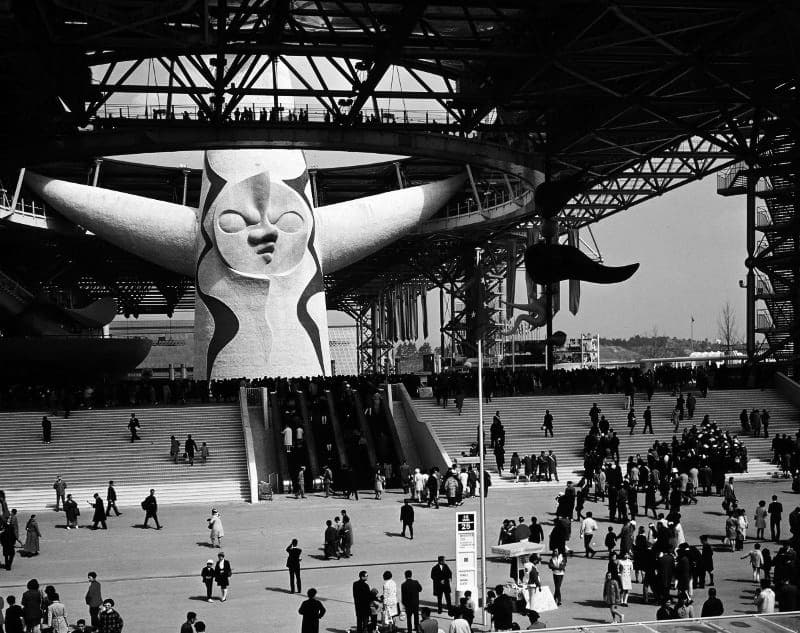

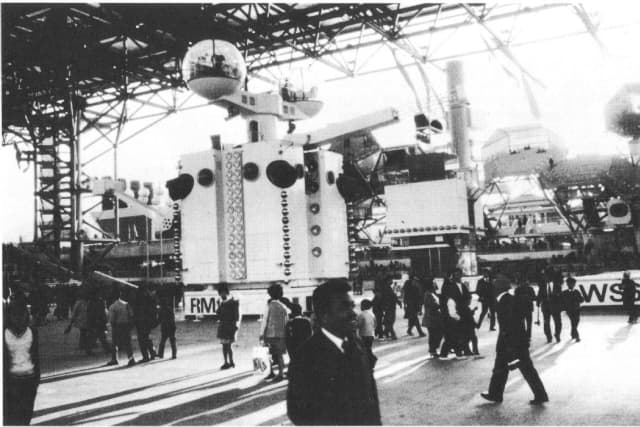


Expo 2025 Osaka, Kansai, Japan, will provide the world with an opportunity to come together in one “place” at this time to explore the theme of “life.” This Expo will facilitate interactions between people with diverse values from around the world, resulting in new human networks and creative endeavours. We aim to make Expo 2025 Osaka, Kansai, Japan, an international exposition that can share hopes for a brighter future with the world by overcoming the current global crisis, protecting people's lives, and reflecting on life and lifestyles.

There are different types of tickets on sale for the Osaka Expo, from single tickets to season passes. Prices for a regular ticket start at 4.000yen, we recommend buying early as prices go up the longer you wait. There are also discounted tickets available for children, those with disabilities and night tickets.

Here's a handy map of the Osaka Expo, with the full expo layout and highlighted points of interest. Feel free to download a copy.
The Expo can be accessed quickly and conveniently from anywhere using the Shinkansen
and the Japan Rail Pass.


If you're coming from outside of the Kansai Area, then the first step from going anywhere in Japan to the Expo is using the Shinkansen bullet trains to Shin-Osaka station. There are direct connections from all major cities in Japan, including Tokyo, Nagoya, Kyoto, Hiroshima, Fukuoka and more. All included in the JR Pass, with complementary seat reservations.
If you're coming from the wider Kansai Area, then you're already close! There are direct trains going into Osaka from all across Kansai. Whether it is Kyoto, Nara, Kobe or even Kansai Airport itself. The first step is to take a train to Osaka station (even if you are coming from Shin-Osaka station).
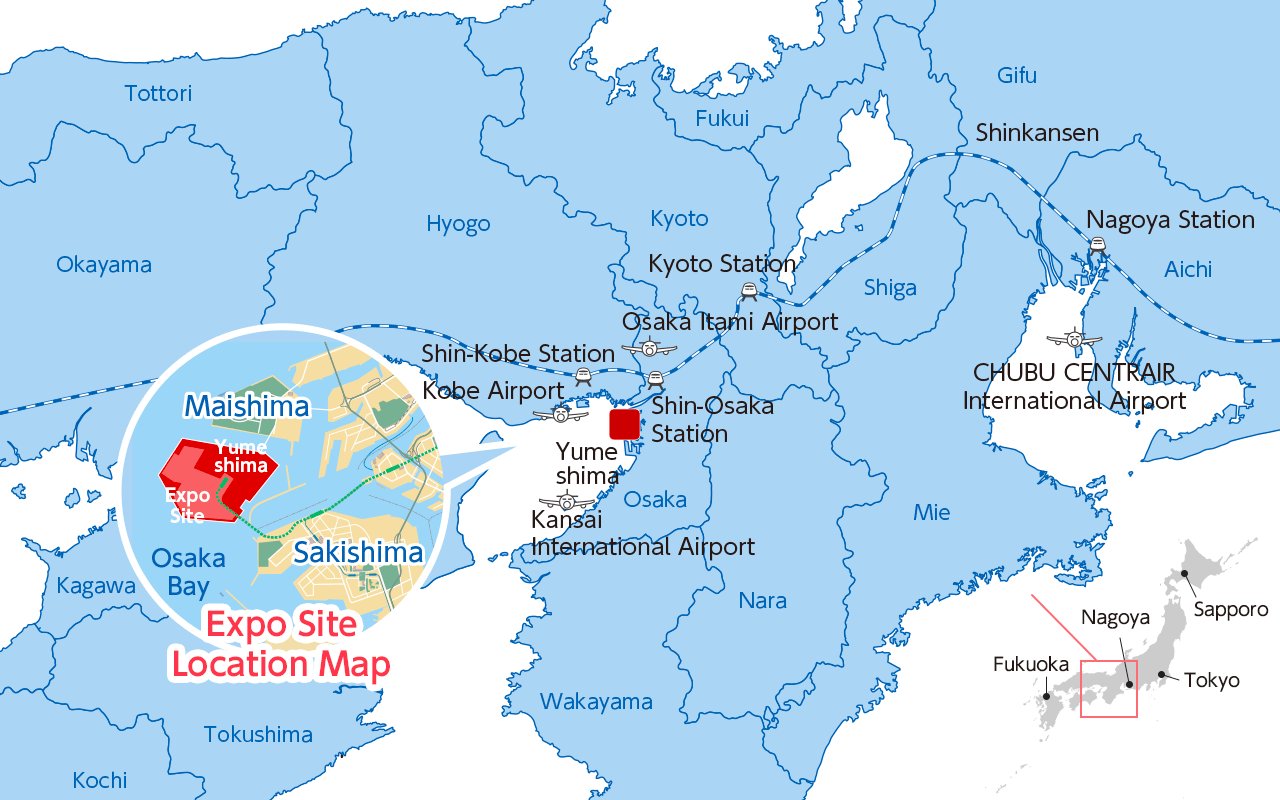
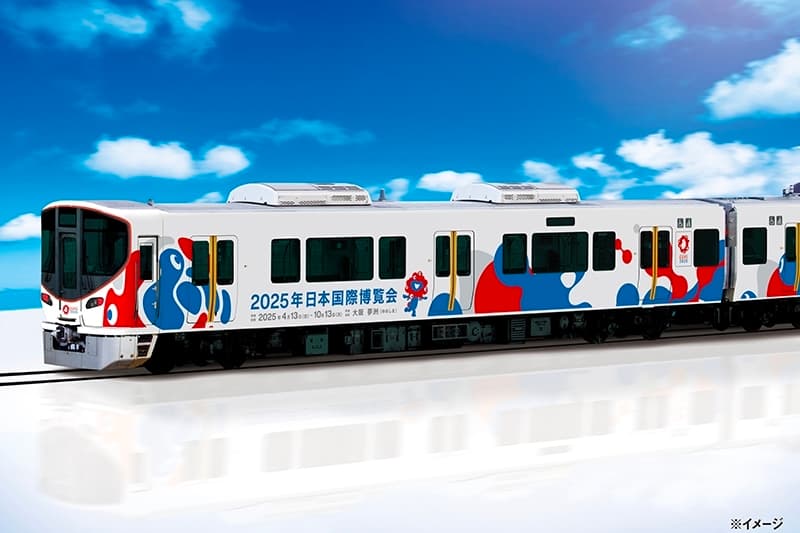
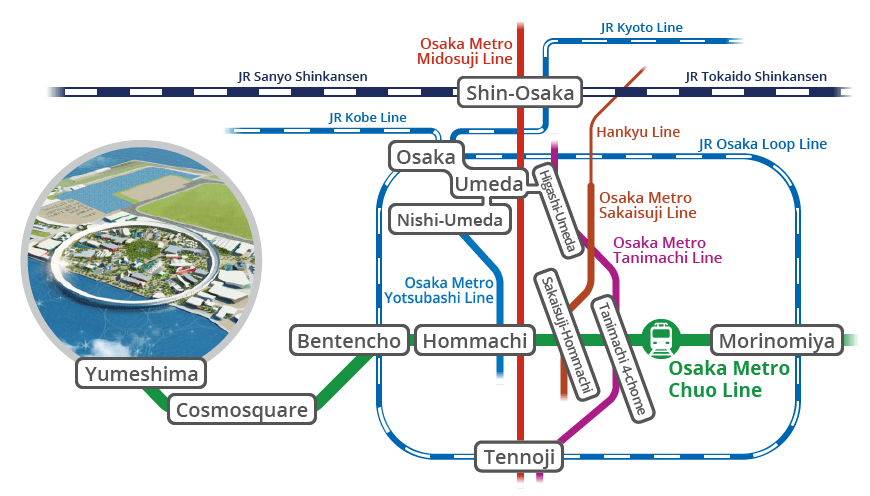
Once you arrive at Osaka station, take the JR Loop line (inner loop) to JR Bentencho station. Here transfer to the Osaka Metro Chuo line bound for Yume Shima Station. This is the final stop for the expo. If you have a JR Pass, the route is covered until Bentencho but a normal fare is required for the last part on the Osaka Metro.
From Yume Shima station, it is less than 5 minutes walk to the Osaka Expo entrance.
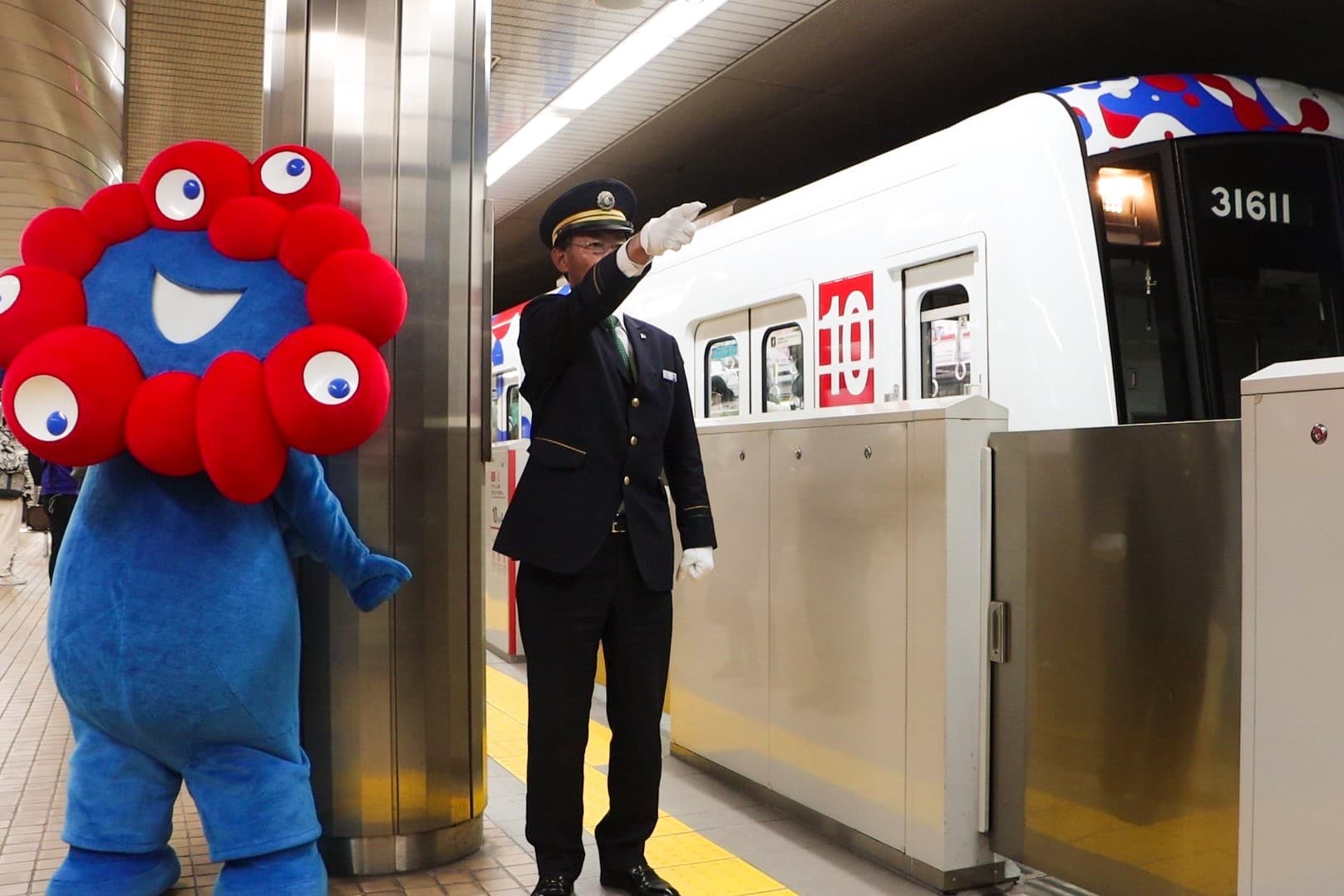
The Osaka Metro introduced its specially themed Expo train cars. With the metro, access to the expo is easy and quick. If you're interested in spotting these cars yourself, look for them on the Osaka Metro Midosuji Line and Tanimachi Line, both running through central Osaka.
The station on the Osaka Metro for the Expo is called “Yume Shima” and can be directly accessed using the Osaka Metro Chuo line. Please do note that the Osaka Metro is not included in the JR Pass or any JR-West regional pass.
The Japan Rail Pass is the best way to travel around Japan and access the Expo, especially if you're coming from Tokyo or other areas and need intercity travel. Use the world famous Shinkansen bullet trains, then connect to one of the countless local trains for access anywhere in Japan. The Japan Rail Pass covers travel between all JR lines nationwide and all for an unbeatable price and comes in periods of 7, 14 and 21 consecutive days.
The pass also comes with a ton of handy perks, like complimentary seat reservations, free luggage and the flexibility to reschedule your travel as needed. We also offer a variety of regional options for those that stay local and the budget conscious traveler.
One ticket for
all of Japan
Free seat reservations
secure your seating
Great value and
amazing savings
Travel on the high speed
bullet trains
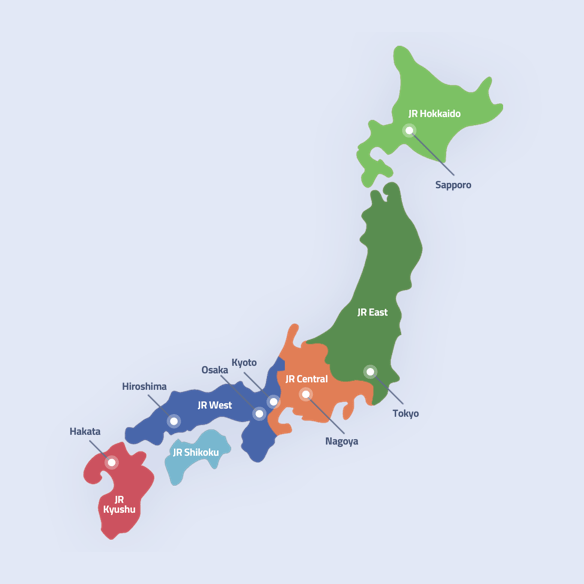
If you arrive at Kansai Airport or are already in the Kansai Area, or even the JR-West area, then a regional JR Pass is a great match. The Kansai Wide Pass is especially a good deal for those that want to visit to Expo and combine their stay with one of many beautiful places found around Kansai.
Regional passes offer great value if you plan to travel in a limited area
Depending on the pass, different durations and flexible days are available
Child passes for children between 6-11 years old are available for half the price of an adult
Regional passes can only be used by international tourists visiting Japan. Japanese nationals are exempt from using them.
Ordinary
7 days
Child passes (6-11) are available for half price
Order nowOrdinary
5 days
Child passes (6-11) are available for half price
Order nowOrdinary
7 days
14 days
21 days
Premium Green Class
7 days
14 days
21 days
Child passes (6-11) are available for half price
Order nowOrdinary
5 days
Child passes (6-11) are available for half price
Order nowIf you're travelling to Japan for the 2025 Expo, it is the perfect opportunity to explore the rest of this beautiful and unique country. Be adventurous to look beyond the cities of Osaka and Tokyo,
Make the most of this once-in-a-lifetime opportunity to explore Japan. From the Buddhist temples and Shinto shrines of Kyoto, to the spectacular Mount Fuji, the beautiful and mountainous Southern Alps, and the coastal wonders of the Northern regions, Japan has a deserved reputation as one of the most spectacular and unforgettable countries in the world.
The Osaka Expo 2025 will be an incredible experience, but you may also want to escape the metropolis in between sporting events to see the rest of Japan and with cities like Kyoto, Hiroshima and Kobe, most places are only a few hours away on a high speed bullet train.
Find out where to buy the japan rail pass online.
We have special prices for children and great first class options. See all tickets or see our range of Regional Passes